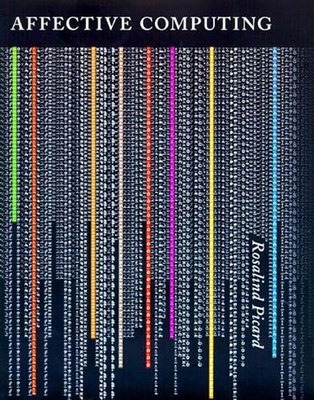
- We will send in 10–14 business days.
- Author: Rosalind W Picard
- Publisher: MIT Press
- ISBN-10: 0262661152
- ISBN-13: 9780262661157
- Format: 16.7 x 24.4 x 1.5 cm, softcover
- Language: English
- SAVE -10% with code: EXTRA
Reviews
Description
According to Rosalind Picard, if we want computers to be genuinely intelligent and to interact naturally with us, we must give computers the ability to recognize, understand, even to have and express emotions.The latest scientific findings indicate that emotions play an essential role in decision making, perception, learning, and more--that is, they influence the very mechanisms of rational thinking. Not only too much, but too little emotion can impair decision making. According to Rosalind Picard, if we want computers to be genuinely intelligent and to interact naturally with us, we must give computers the ability to recognize, understand, even to have and express emotions.
Part 1 of this book provides the intellectual framework for affective computing. It includes background on human emotions, requirements for emotionally intelligent computers, applications of affective computing, and moral and social questions raised by the technology. Part 2 discusses the design and construction of affective computers. Although this material is more technical than that in Part 1, the author has kept it less technical than typical scientific publications in order to make it accessible to newcomers. Topics in Part 2 include signal-based representations of emotions, human affect recognition as a pattern recognition and learning problem, recent and ongoing efforts to build models of emotion for synthesizing emotions in computers, and the new application area of affective wearable computers.
EXTRA 10 % discount with code: EXTRA
The promotion ends in 17d.06:48:49
The discount code is valid when purchasing from 10 €. Discounts do not stack.
- Author: Rosalind W Picard
- Publisher: MIT Press
- ISBN-10: 0262661152
- ISBN-13: 9780262661157
- Format: 16.7 x 24.4 x 1.5 cm, softcover
- Language: English English
The latest scientific findings indicate that emotions play an essential role in decision making, perception, learning, and more--that is, they influence the very mechanisms of rational thinking. Not only too much, but too little emotion can impair decision making. According to Rosalind Picard, if we want computers to be genuinely intelligent and to interact naturally with us, we must give computers the ability to recognize, understand, even to have and express emotions.
Part 1 of this book provides the intellectual framework for affective computing. It includes background on human emotions, requirements for emotionally intelligent computers, applications of affective computing, and moral and social questions raised by the technology. Part 2 discusses the design and construction of affective computers. Although this material is more technical than that in Part 1, the author has kept it less technical than typical scientific publications in order to make it accessible to newcomers. Topics in Part 2 include signal-based representations of emotions, human affect recognition as a pattern recognition and learning problem, recent and ongoing efforts to build models of emotion for synthesizing emotions in computers, and the new application area of affective wearable computers.


Reviews